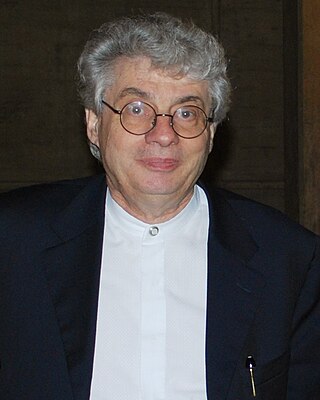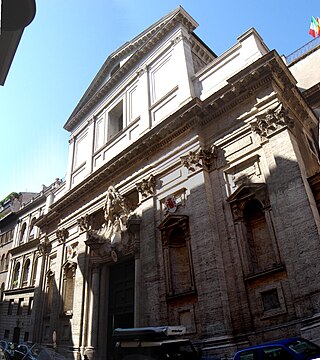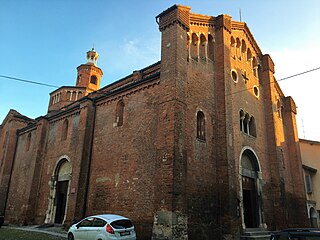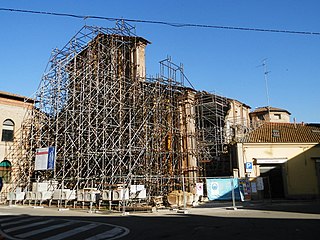
Mario Botta is a Swiss architect born in Mendrisio, Ticino on April 1st, 1943. At age fifteen, Botta dropped out of secondary school and apprenticed with the architectural firm of Carloni and Camenisch in Lugano. After three years, he went to the Art College in Milan for his baccalaureate, and then to Università Iuav di Venezia for his professional degree in 1969. During his time in Venice, Botta got to meet and work with the architects: Carlo Scarpa, Louis Kahn and Le Corbusier. Mario Botta started his own architectural practice in Lugano in 1970.

The Church of the Gesù is the mother church of the Society of Jesus (Jesuits), a Catholic religious order. Officially named Chiesa del Santissimo Nome di Gesù all'Argentina, its façade is "the first truly baroque façade", introducing the baroque style into architecture. The church served as a model for innumerable Jesuit churches all over the world, especially in the Americas. Its paintings in the nave, crossing, and side chapels became models for Jesuit churches throughout Italy and Europe, as well as those of other orders. The Church of the Gesù is located in the Piazza del Gesù in Rome.

Peccia is one of six small Swiss municipalities which merged in April 2004 to form the commune of Lavizzara, with about 1000 people. The other municipalities were Broglio, Brontallo, Fusio, Menzonio, and Prato-Sornico. The fractions of Peccia are: Veglia (Véia), Cortignelli, San Carlo and Piano di Peccia.

Lavizzara is a municipality in the district of Vallemaggia in the canton of Ticino in Switzerland.

Mogno is a village in Vallemaggia District in the canton of Ticino, Switzerland. Mogno is situated near the top of Val Lavizzara, a valley through which the upper Maggia river flows. Formerly part of the municipality of Fusio, which merged with adjoining municipalities in 2004 to form the new municipality of Lavizzara.

The Spanish National Church of Santiago and Montserrat, known as Church of Holy Mary in Monserrat of the Spaniards is a Roman Catholic titulus church and National Church in Rome of Spain, dedicated to the Virgin of Montserrat. It is located in the Rione Regola, at the intersection of alleyway of Via della Barchetta and the narrow Via di Monserrato, with the facade on the latter street, about three blocks northwest of the Palazzo Farnese.

San Francesco della Vigna is a Roman Catholic church in the Sestiere of Castello in Venice, northern Italy.

Évry Cathedral is a Roman Catholic church located in the new town of Évry (Essonne), France. The cathedral was designed by Swiss architect Mario Botta. It opened in 1995 and was consecrated and dedicated to Saint Corbinian in 1996. It is the only cathedral begun and completed in France in the 20th century.

Fusio is a village and former municipality in the district of Vallemaggia in the canton of Ticino, Switzerland.

Santa Maria del Carmine is a church in Pavia, Lombardy, northern Italy, considered amongst the best examples of Lombard Gothic architecture. It was begun in 1374 by Gian Galeazzo Visconti, Duke of Milan, on a project attributed to Bernardo da Venezia. The construction followed a slow pace, and was restarted in 1432, being finished in 1461.

Lugano Cathedral is a Roman Catholic cathedral dedicated to Saint Lawrence in Lugano, Ticino, Switzerland. It was founded in the High Middle Ages but rebuilt in the late 15th century, with the façade completed in 1517. It is the seat of the Bishop of Lugano.

San Benedetto is a late-Baroque architecture, Roman Catholic church and former Benedictine monastery in the city Catania, Sicily, southern Italy. The church facade faces Via Crociferi, parallels across via San Benedetto the former-Jesuit church of San Francesco Borgia, and both are about a block south along Crociferi from the church and convent of San Giuliano. Entrance to church and monastery appear to be through Piazza Asmundo #9 near the apse of the church.

The Church of San Marco in San Girolamo is a baroque parish church in Vicenza, northern Italy, built in the 18th century by the Discalced Carmelites. It houses various artworks by artists of the early 18th century from Veneto. The sacristy preserves its original furniture of the same period.

The Church of San Nicolò and San Severo is the Latin Church parish church of the Catholic Church in Bardolino, a small comune located at the Lake Garda in the Province of Verona, Italy. Its architecture is of a neoclassical construction.

San Teodoro is a Romanesque-style Roman Catholic church in the town center of Pavia, Italy.
Carlo Giuseppe Plura was a Swiss-Italian stucco artist and sculptor. He was born in Lugano and died in Borgo San Dalmazzo. Like him, his son Giuseppe Antonio Plura the Elder and Giuseppe Plura the Younger were both sculptors and both active in the United Kingdom.

The church of San Francesco is a church located in Mirandola, in the province of Modena, Italy.

The Chiesa di San Giovanni Battista is a Roman Catholic church dating to the 13th and 18th centuries, located in Matera in the Italian region of Basilicata, and dedicated to Saint John the Baptist. Like the Duomo, the church is an important example of Apulian Romanesque architecture.

The church of San Francesco of Assisi is a Catholic religious building in Pavia, Lombardy, Italy.

The collegiate church of San Martino is a religious building located in the historic center of Cerreto Sannita.



















